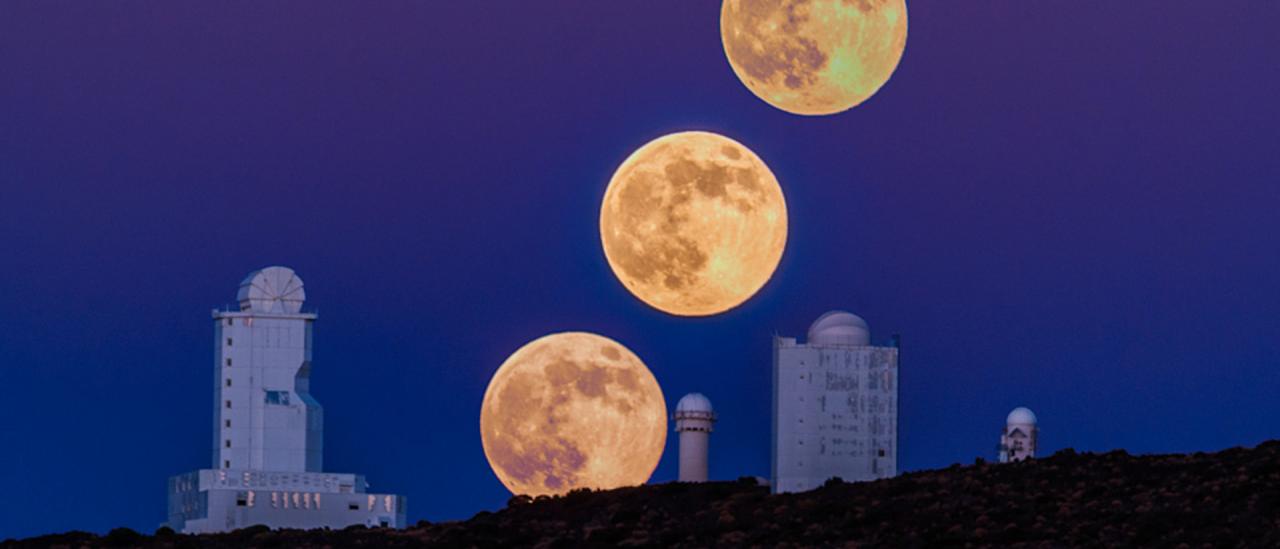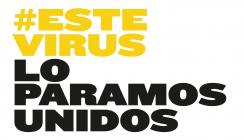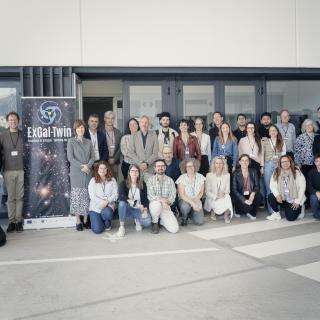On April 8th, you will be able to see the third and biggest Supermoon of 2020. If you follow the recommendations we present below you will be able to obtain some beautiful images of the full Moon from your home.
The term “supermoon” was coined only a few decades ago and it has no scientific use. It refers to our perception of the diameter and brightness of the full Moon from Earth in relation to its apogee, the maximum distance this satellite is from our planet. The Moon rotates on the Earth with a period of approximately 28 days. But its orbit is not circular. It's an ellipse. That is why the distance Earth-Moon is not always the same and therefore neither is the size and brightness we perceive from its image.
By the definition of a “supermoon” this is produced if full Moon occurs close to lunar perigee. So during this year 2020 we will have up to four “supermoons” (in February, March, April and May). In fact this astronomical phenomenon is so usual that in general there are between three and five “supermoons” per year. In this phenomenon, its apparent diameter is then 14% bigger than its value at apogee, and its brightness up to 30% more. During the next “supermoon” its size and brightness will be greater by 12% and 29% respectively, compared to apogee, because next Wednesday 8th April, at 2:36 UT, the Earth-Moon distance will be 357,035km compared to its maximum at apogee in 2020 of 406,690 km.
#SuperLunaDesdeCasa
Most of us will have to see this full Moon at perigee from our homes. So as not to miss the opportunity to enjoy the spectacle in all its glory we include below a set of recommendations to photograph it from home, and we encourage you to share the result in you social networks, using the hashtag #SuperlunaDesdeCasa.
The night of Tuesday 7th will be the best time to observe it. At the time of sunset in the west the full moon will be rising above the eastern horizon. Fort the whole night, until dawn, we will be able to see it cross the sky. A nice moment to record it would be during moonrise or moonset. If the horizon is clear we will be able to see some atmospheric refraction effects and we will have enough general light to see the landscape as well. One hour after sunset and up to an hour prior to sunrise we will have night-time darkness, (although not so dark because of the full Moon). During that time we will also be able to see and photograph the stars. And before dawn the Moon will begin to disappear as it approaches the western horizon.
To photograph it with our cellphones we should not use a pre-defined (automatic) mode but we should adjust the exposure manually. For example for a conventional cellphone in bright surroundings (within a city for example) it is enough to expose with ISO 1600 for two seconds with maximum apertura (mínimum f ratio)
It the programme in our cellphone does not allow us to adjust the exposure values, we can download one of the many free apps. The same goes for editing the images: it is enough to be able to adjust the exposure, the contrast, and the colour to achieve a result which is more realistic and/or attractive.
Some high class cellphones come with a built-in zoom, and with another camera with a longer focal length. This can help us to get more detail, but we will lose some of the landscape. There are also mini-objectives for cellphones on sale, with pretty decent results.
Aquí encontrará algunas recomendaciones más:
Here you will find some further recommendations: https://go.nasa.gov/3bZ7vRj
EELabs (eelabs.eu) is a project funded by the Programme INTERREG V-A MAC 2014-2020, cofinanced by FEDER (European Fund for Regional Development) of the European Union, under contract number MAC2/4.6d/238. Five centres in Macaronesia (IAC, ITER, ULPGC, SPEA-Azores and SPEA-Madeira) work in EELabs. The objective of EELabs is to build laboratories to measure the energy efficiency of the artificial night lighting in protected natural areas in Macaronesia (the Canaires, Madeira, and the Azores).
EELabs website: http://www.eelabs.eu
Images and more audiovisual content about "Supermoons"

Apparent sizes of the Supermoon on August 10, 2014 and the full moon on October 18, 2013. Author: Juan Carlos Casado / StarryEarth. High resolution: https://flic.kr/p/oGfDUV








